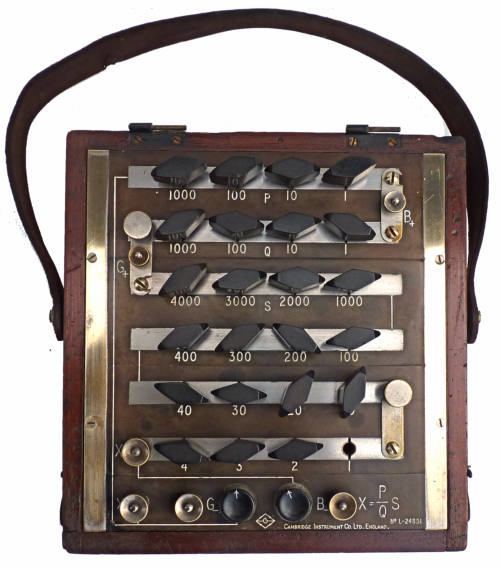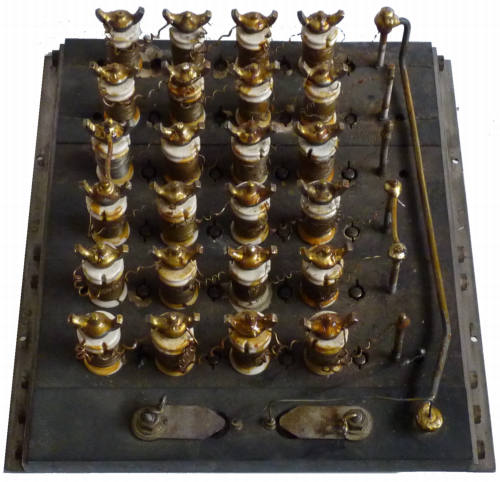
Serial No.L-24851

Cambridge instruments ltd. Resistance Bridge in wood case with detachable lid with Ebonite panel and brass plugs for resistance selection and brass terminals.Designed for determining the value of unknown resistances. two 1/10/100/1000 ohm arms and one variable 0-10000 ohm arm. working Possibly dates from 1920
This instrument used to belong to the late Mr R M Nightingale and was given to me by his daughter. Roy Nightingale worked at Cambridge Instruments for many years. It clearly has had a busy life and was in poor shape when it was given to me. Fortunately all the resistance coils were in good order and all that was needed was to improve it cosmetically. The front panel has been washed and the engravings filled with off white emulsion paint which was allowed to partially dry before being removed with a soft cloth. The brass terminals were removed and immersed in 'Harpic' lavatory cleaner [contains hydrochloric acid] for a few seconds before being scrubbed clean with water and a toothbrush. I removed the leather strap but I had to resort to cutting the screws which were severely corroded. The wooden box was then washed, dried and given a couple of coats of shellac varnish. The strap was washed, dried and treated with brown shoe cream. The strap retaining screws and washers were replaced with new items. .

The top is made of thick ebonite supporting undercut brass blocks
shaped to accommodate 24 interchangeable brass shorting plugs which
have ebonite handles. The brass blocks are connected to resistance
coils wound on ceramic formers.

